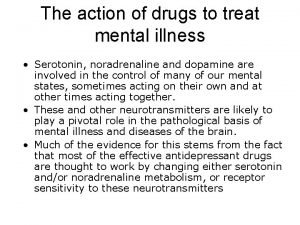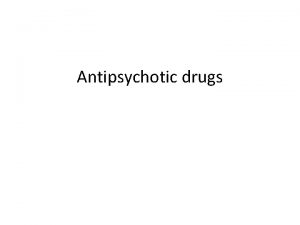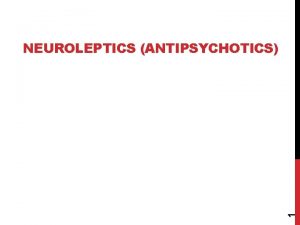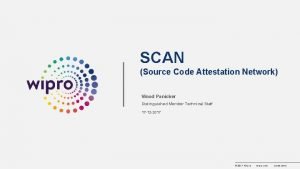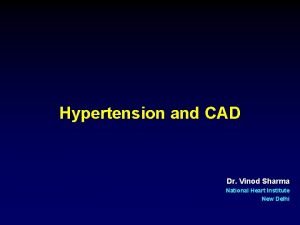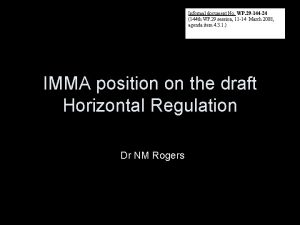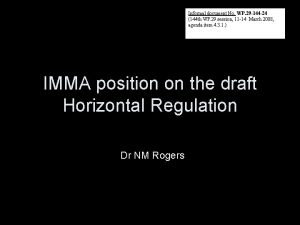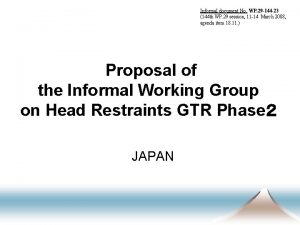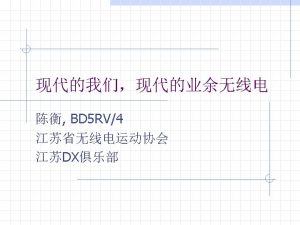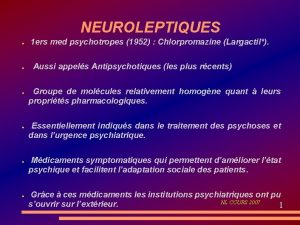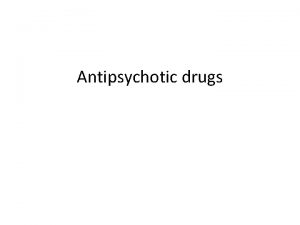CHLORPROMAZINE Vandana Vinod 18 M 144 9561 INTRODUCTION
















- Slides: 16

CHLORPROMAZINE Vandana Vinod 18 M 144 9561


INTRODUCTION

Chlorpromazine is a phenothiazine that is used to treat psychotic disorders such as schizophrenia or manic-depression in adults. Chlorpromazine is also used in adults to treat ● nausea and vomiting, ● anxiety before surgery, ● chronic hiccups, ● acute intermittent porphyria, ● symptoms of tetanus.

Chlorpromazine is administered, ● Oral ● Intravenous ● Intramuscular

PHARMACOLOGICAL ACTION

q Central Nervous System: Reduces agitation and aggressiveness Reduces spontaneous movements Suppresses hallucinations and delusions Relieves anxiety Corrects disturbed thought and behaviour Does not affect intelligence but impairs vigilance.

q CVS Postural Hypotension Tachycardia Palpitations q Other Actions Antipsychotic Effect Antipruritic effect Sedation

q. Endocrine : Prolactin secretion is under the control of prolactin releasing factor (PRF) and prolactin inhibitory factor (PIF). PIF is dopamine, hence, blockade of DA- receptors in pituitary. Cause increased production of prolactin leading to galactorrhoea, amenorrhoea and infertility in females. q Tolerance to sedative and hypotensive actions develops within a few weeks.

MECHANISM OF ACTION

Limbic system, mesocortical antipsychotic effect areas CTZ Dopamine receptors antiemetic effect Basal ganglia extrapyramidal symptoms in Pituitary CPZ 5 -HT 2 receptors increase in prolactin release Antipsychotic effect blocks alpha-1 adrenergic receptors H 1 receptors Muscarinic receptors retention. postural hypotension, tachycardia, palpitation sedation, antiprutitic effect dryness of mouth, blurred vision, constipation, urinary

Chemoreceptor trigger zone (CTZ) is an area of the medulla oblongata that receives inputs from blood-borne drugs or hormones, and communicates with other structures in the vomiting center to initiate vomiting. The CTZ is located on the floor of the fourth ventricle. It is also part of the vomiting center itself

Alpha-1 blocker lowers the blood pressure by blocking alpha-1 receptors so norepinephrine cannot bind the receptor, causing the blood vessels to dilate. Without the resistance in the blood vessels the blood runs more freely.

5 -hydroxytryptamine receptors or 5 -HT receptors, or serotonin receptors, are a group of G protein-coupled receptor and ligand-gated ion channels found in the central and peripheral nervous systems. They mediate both excitatory and inhibitory neurotransmission.

extrapyramidal symptoms on blocking dopamine receptors in basal ganglia include, ● ● ● dystonic reactions, dyskinesia, Parkinsonism, akinesia, akathisia

THANK YOU !!
 Guru vandana mantra
Guru vandana mantra Critical point auditing
Critical point auditing Cara kerja chlorpromazine
Cara kerja chlorpromazine Chlorpromazine
Chlorpromazine Chlorpromazine
Chlorpromazine Acute dystonia
Acute dystonia Vinod sampat
Vinod sampat Vinod ganapathy
Vinod ganapathy Dmaremappingcompatible
Dmaremappingcompatible Vinod vaikuntanathan
Vinod vaikuntanathan Byzantine reliable broadcast
Byzantine reliable broadcast Vinod jain ca
Vinod jain ca Vinod panicker
Vinod panicker Aorldw
Aorldw One minute management techniques
One minute management techniques Dr vinod sharma national heart institute
Dr vinod sharma national heart institute Vinod kurup
Vinod kurup



